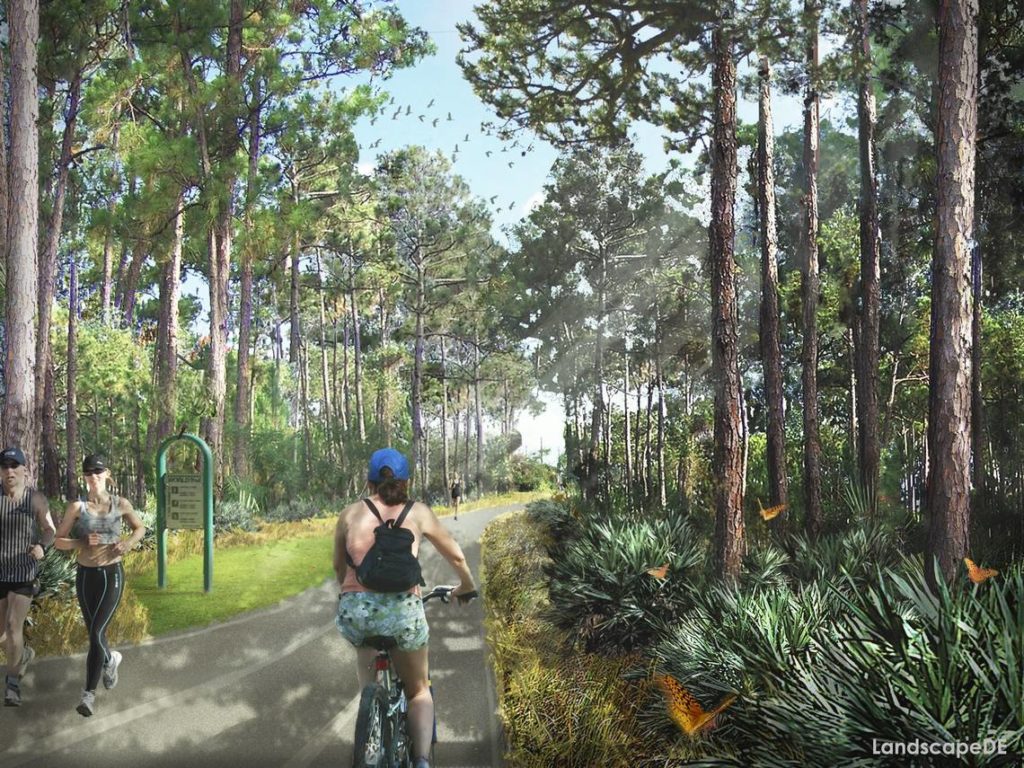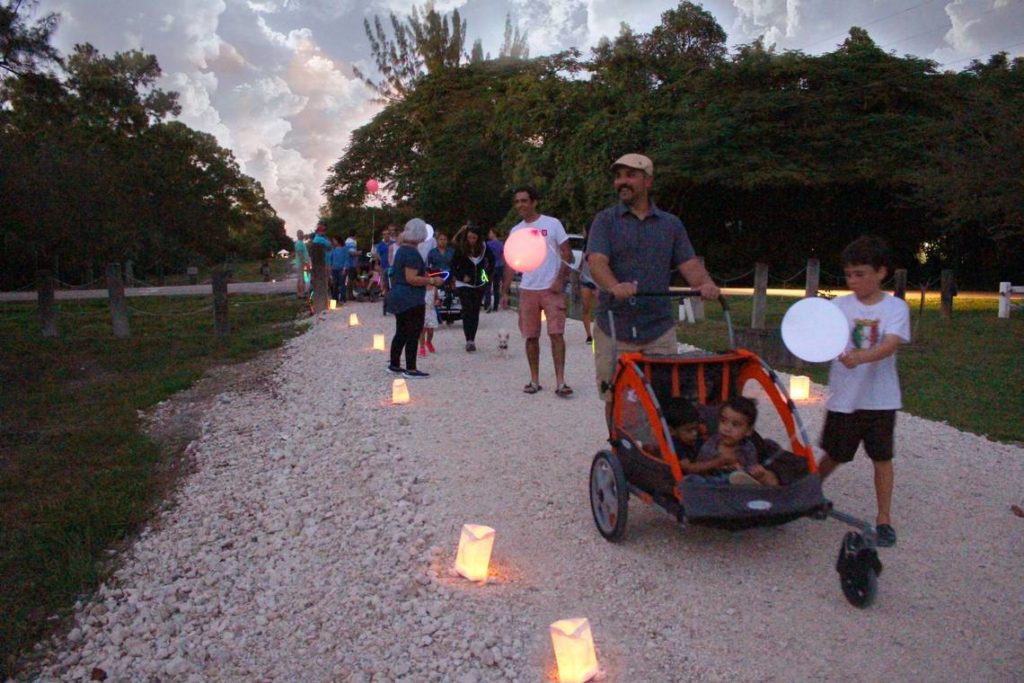First came the Underline: Construction on the first piece of the planned 10-mile-long linear park below the elevated Metrorail tracks began in October. Now it’s the Ludlam Trail’s turn.
Work is set to start later this year on the initial segment of the Ludlam Trail, a long-awaited park and running and cycling trail that will run along an abandoned railway corridor in west Miami-Dade and link up with the Underline at Dadeland.
That first piece of the Ludlam Trail will be built as part of a new retail and residential project on the south side of Bird Road that’s scheduled to break ground at the end of this year, a team of developers announced Thursday.
The developers said they closed Wednesday on the purchase of a $36 million, 13-acre land assemblage from Florida East Coast Industries, owner of the old railway corridor, which extends in a straight shot about six miles from Dadeland to near Miami International Airport.
The purchase includes a half-mile-long segment of the railway right-of-way as well as several commercial and industrial properties along it. As part of a complex zoning plan previously approved by Miami-Dade County, the developers plan to build about 950 apartments and 35,000 square feet of retail straddling the trail in three phases.
The developers — a partnership of former FECI CEO Vincent Signorello’s Scout Capital Partners, Orlando-based ZOM Living and Miami investment firm Mattoni Group — will also design and build a half-mile-long segment of the trail and maintain it at no cost to taxpayers. Bird Road is roughly the proposed trail’s midpoint.
“The kickoff of the overall Ludlam Trail starts with us,” Signorello said in an interview.
The announcement is the culmination of years of sometimes fractious negotiations among the county, the city of Miami, FECI, trail backers and neighboring residents.
In 2014, FECI withdrew an initial plan that called for development along much of the proposed trail in the face of public opposition. The company subsequently agreed instead to a county plan that restricts development to three dense “nodes” at major roads, including Bird.
Last year, the Miami-Dade Commission approved the $25 million purchase of 80 percent of the rail corridor, which is 100 feet wide for most of its length, for conversion into the trail. The corridor runs between Southwest 70th and 69th avenues.
The county has secured about $27 million of the $94 million price tag for construction of its lion’s share of the Ludlam plan. Trail segments at each of the four development nodes, representing 20 percent of the rail corridor’s length, would be installed by private builders using parameters set by county planners, though each node would have its own look.
At Bird Road, Signorello said, the public trail will be “seamlessly connected” into a new mixed-use development. “Lifestyle” retail, likely mostly food and beverage, will be oriented to the trail. So will three planned rental apartment buildings.
“As a resident, you’re walking out your front door and you’re on the trail,” he said.
The look and feel of the project will echo the industrial district that runs along the west side of the trail at that point, using raw concrete, steel and exposed wood, said Signorello and ZOM CEO Greg West. Some of the retail could be housed in shipping containers. The trail itself would take on an urban feel through the as-yet-unnamed project, though other segments are expected to have a park-like ambience.

To design the project, the developers turned to Lake/Flato, a San Antonio, Texas, architectural firm with experience in reworking industrial districts. The developers say they also have studied other noted urban rail-to-trail conversions, such as the Katy Trail in Dallas and the Atlanta Beltline, for cues.
County planners and backers of the trail project, including Friends of the Ludlam Trail, have pitched the linear park not just as a recreational facility for runners, walkers and cyclists, but also as a protected bike-commuting corridor. The trail would connect five schools, including South Miami High; four parks; three waterways; and two Metrorail stations at Dadeland North and South with the planned link to the Underline. The Underline would then connect to Brickell and the Miami River. Eventually, backers hope, the north end of the Ludlam Trail could link up with a Miami River Greenway that’s gradually being installed as new development occurs, creating what they’ve dubbed the “Miami Loop.”
The developers said they hope to attract renters eager to embrace an urban lifestyle with the lure of the trail and the chance to commute to work or school, or to run short errands by bike — though each building will have a garage. Rents will be “more affordable” than rents in nearby Coral Gables or in downtown Miami, West said.
The Bird Road piece should become a destination and gathering place for trail users, residents of neighboring communities and residents of their project, Signorello and West said.
“That’s what will breathe life into the trail project and the development project,” Signorello said.
The first phase will rise on vacant land just off Bird Road, the developers say. The Bird Road frontage is now mostly occupied by the U.S. Post Office’s Ludlam Branch, which has several years remaining on a lease and will stay in place, they said.
At the south end, the developers’ trail piece would connect to a long county-owned segment. At the north end, where it meets the edge of busy six-lane Bird Road, the county is studying construction of a bridge for cyclists and pedestrians. The development team also owns a small piece of the rail corridor on the other side of Bird where the bridge would touch down. The group doesn’t yet have a plan for that piece, a spokesman said.

Because the project is “fully capitalized” and the Miami-Dade commission approved the zoning plan for the trail earlier this year, all the developers need to proceed are building permits, they said. Construction drawings are now being done by their architects. The developers expect construction on the first phase to be completed about 16 months after groundbreaking.
To deal with soil contamination from years of herbicide application by FECI to keep the rails clear of plant growth, the ground will be capped with clean fill in a process prescribed by county environmental regulators, the developers say. Discovery of the contamination led the county to order the rail corridor fenced off, putting a stop to a program of activities coordinated by FECI and the Friends group to publicize and activate the trail site.
https://www.miamiherald.com/news/business/real-estate-news/article228227444.html